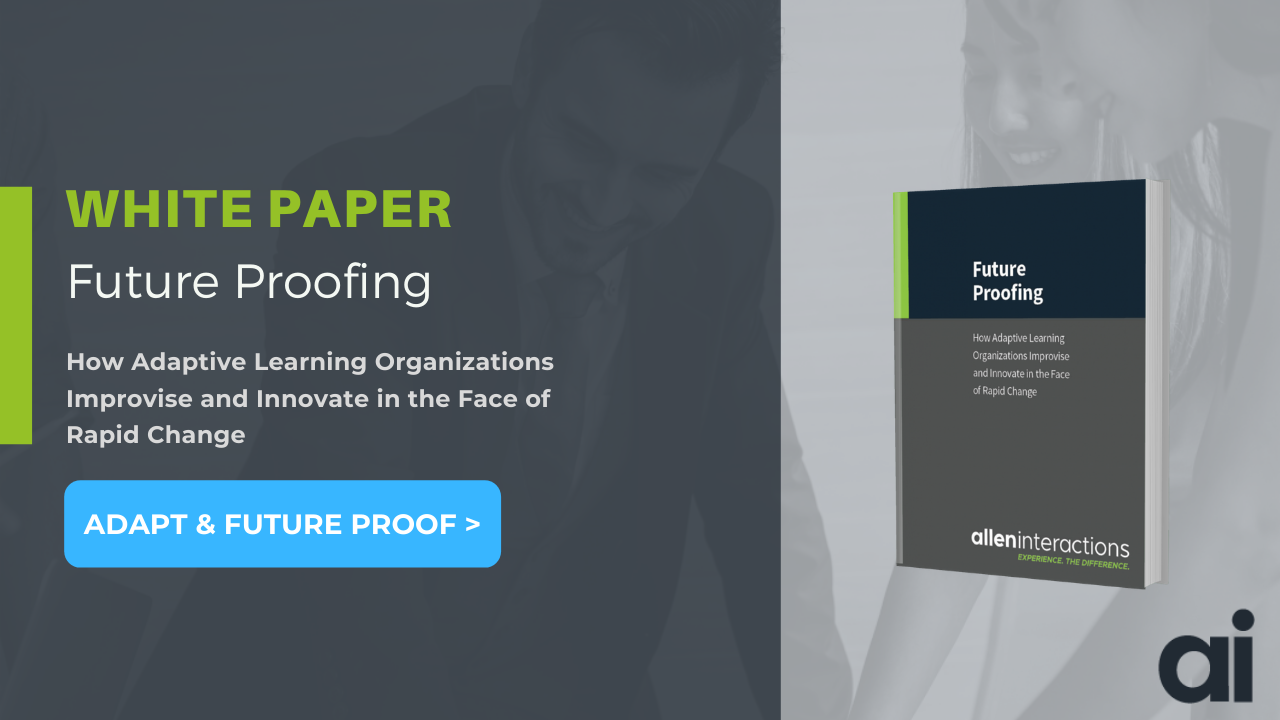As the workforce becomes more distributed, it will be critical for us to create learning ecosystems that enhance collaboration, communication, and creativity while maintaining engaged and highly motivated employees.
I’ve been working from home since 2015. Over the past 5 years, this arrangement has transformed from luxury to necessity. But even without the current crisis, cultural forces are driving an inexorable move from the office cubicle to the dining room table (or home office if you have the room to spare). Flexible work arrangements have been part of our national conversation since the dot com bubble of the 1990’s. This is in no small part due to advances in information and communications technology as well as the growing recognition that the 19th Century factory model of work is ineffective in the new knowledge economy.
Matt Mullenweg, a founding developer of WordPress and CEO of Automattic, articulated this evolution nicely in a recent interview on the podcast “Making Sense”. Automattic has had a globally distributed workforce since its inception in 2005. As I was listening to Mullenweg’s conversation with host Sam Harris, I started to think about the risks and opportunities for learning professionals as the world is now faced with mandated work from home requirements for “non-essential” roles.
On the one hand, we are seeing a repeat of the transition from classroom-based instruction to online learning of early 2010’s. Instructors who don’t have the skills for effective e-learning are essentially attempting to implement their synchronous approach using video conferencing or sage-on-the-stage instructional videos. On the other hand, many instructors and organizational leaders are looking for best practices as they make the transition to online. This gives learning professionals an opportunity to contribute to better outcomes as employees are developing new skills in a distributed work environment.
Just as moving classroom instruction to an online format requires more than simply posting videos and Powerpoint presentations to a Learning Management System (LMS), implementing and enabling a distributed workforce demands that we dispense with the old factory models of office work. Knowledge workers do not generate value the same way that the factory workers of the industrial age did. (I’m not disparaging manufacturing work here. Lean models and advances in automation have transformed the work of these roles as well making them more like knowledge work.)
Knowledge workers must be able to think creatively about problems in order to come up with creative solutions. The challenge for organizations in the knowledge economy with a distributed workforce is to keep their employees actively engaged and committed to the organizational vision and mission.
Understanding Motivation as Learning Professionals
A first step in this regard is to understand motivation. Psychologists have two basic models of motivation:
- Intrinsic
- Extrinsic
Extrinsic motivators are what traditional organizations provide in the form of pay raises and promotions. But what effect does this have on teamwork, collaboration, creativity, and innovation when employees are jockeying for position in competition for limited opportunities? Research in psychology has shown that the best performers are intrinsically motivated. Their desire to do good work comes from three primary drivers: competence, autonomy, and purpose. People want to be good at what they do. They want to be able to make decisions independently without reprisal for taking initiative. And they want their work to matter—to contribute to a bigger picture.
What does this understanding of motivation mean for learning professionals? We need to personalize the curriculum and help people determine their career path and the competencies they need to develop along the way. We need to rethink leadership development in a way that helps flatten organizational hierarchies by turning managers into servant leaders. And we need to help empower strategic thinking across the entire organization. We can do this by reimagining knowledge creation and learning as a dynamic process that is both ubiquitous and constant through learning loops and knowledge flows. As self-organizing and agile teams tackle the wicked problems of the current economy, the knowledge they gain should flow and accumulate throughout the organization.
DOWNLOAD EBOOK: 6 Rules to Designing eLearning for Maximum Motivation
Self-organization and agility are models based on natural human behavior. Our hunter-gatherer ancestors survived in small bands of tightly-knit groups. They collaborated in order to survive. This was based on face-to-face interaction, building trust, and learning together. The technologically mediated nature of distributed work can make this kind of teamwork difficult and organizations need to have the capacity to enable this type of work. This not only requires the tools and techniques of online collaboration such as video conferencing, document sharing, and asynchronous communications, but also a new approach to coordinated interaction.

5 Levels of Distributed Organizations
In his discussion with Harris, Mullenweg describes five levels of distributed organizations, a sort of organizational evolution if you will. I summarize these five levels as follows:
Level 1: Ad-hoc Work from Home
Employees work from home in unusual circumstances such as illness or lapse in childcare. They are generally not equipped to perform their work from home and are therefore less effective at their job.
Level 2: Traditional Home Office
Employees regularly work from home but they are expected to perform daily tasks as if they were in an office. Often they are a small percentage of the workforce, the majority of which is still working at the office.
Level 3: Enhanced Home Office
Employees start to take advantage of some of the tools and affordances of working from home. Collaborative document creation and video conferencing becomes more common. New tools are employed that enhance communication such as a better webcam or microphone. Writing skills are enhanced.
Level 4: Asynchronous Home Office
Teams are able to work effectively across time zones and geographical distances. Fewer meetings are necessary as employees learn to take advantage of group chat tools and digital project management. This arrangement creates space for more thoughtful decision-making.
Level 5: Fully Distributed Workforce
The organization is performing better than office-based systems. Employees are judged by outcomes and not activity. They have more control of their schedules and are able to achieve a healthy work/life balance.
As learning professionals, we are in a unique position to help organizations evolve to their optimal distributed state and become true adaptive learning organizations. We can do this by first recognizing that learning is a natural, ubiquitous and dynamic process in all organizations. As the workforce becomes more distributed, it will be critical for us to create learning ecosystems that enhance collaboration, communication, and creativity while maintaining engaged and highly motivated employees.
Grow Your Workplace With Allen Interactions' Fractional CLO Service!
Interim CLOs from Allen Interactions bring together the best in learning ecosystem strategy, instructional integrity, and internal capacity building.
Click here to learn more > or call 800.799.6280 for more information.
-1.png?width=75&height=75&name=Copy%20of%20It%20is%20not%20the%20strongest%20of%20the%20species%20that%20survive%2c%20nor%20the%20most%20intelligent%2c%20but%20the%20one%20most%20responsive%20to%20change%E2%80%99%20(11)-1.png)






Comment